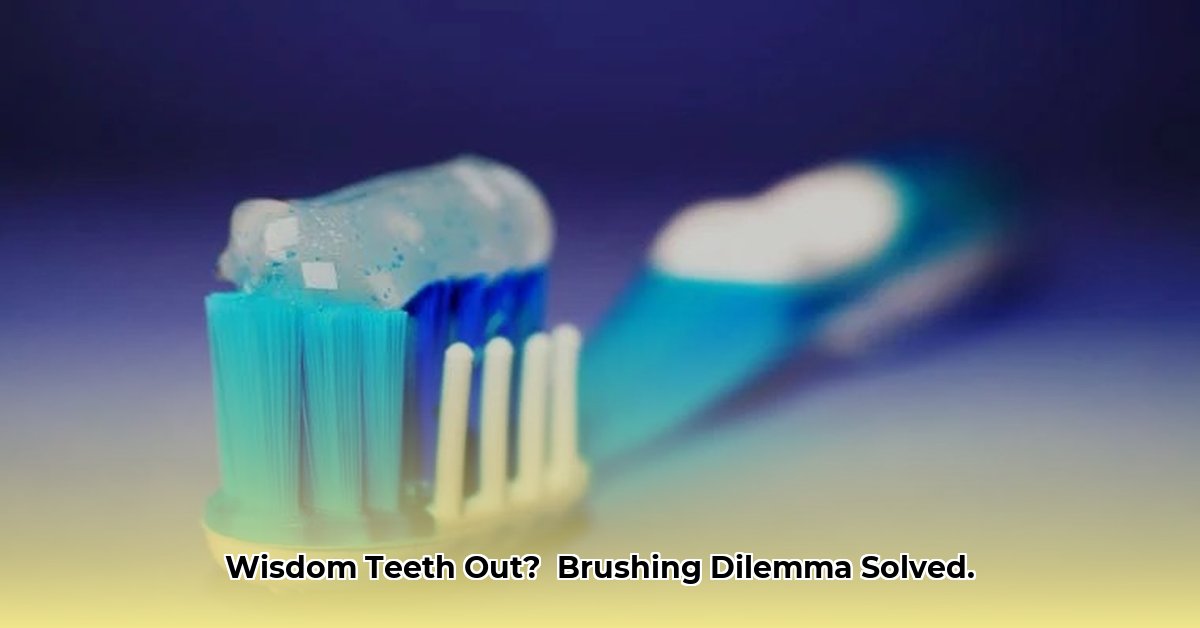Recovering from wisdom tooth extraction requires gentle care and attention. This comprehensive guide provides clear, step-by-step instructions on how and when to brush your teeth after surgery, ensuring optimal healing and minimizing discomfort. Following these evidence-based practices, inspired by resources like the Mayo Clinic and the American Dental Association (ADA), will help you navigate your recovery with confidence.
The First 24 Hours: Rest and Recovery
The initial 24 hours after your wisdom teeth extraction are crucial. Consider this a period of complete rest for your mouth. A blood clot needs to form at the extraction site(s), which is essential for proper healing. Activities like brushing, rinsing, spitting, or even touching the area can disrupt clot formation and lead to complications. Focus on rest and allow your body to begin the natural healing process.
Days 2-3: Gentle Reintroduction of Oral Hygiene
After the first 24 hours, you can gradually reintroduce oral hygiene practices.
Rinsing:
Begin rinsing your mouth with a warm saltwater solution. Dissolve ½ teaspoon of salt in 8 ounces of warm water. Gently swish the solution around your mouth and let it drain out – avoid spitting. This soothing rinse helps keep the area clean and promotes healing. Your dentist may also recommend a specific antimicrobial rinse; follow those instructions precisely.
Brushing:
You can carefully begin brushing your other teeth, being extra cautious to avoid the extraction sites. Use a soft-bristled toothbrush and gentle, circular motions. Think of your mouth as a delicate flower – treat it with the utmost care.
Day 4 and Beyond: Returning to Normal (Carefully)
By day four, you can cautiously resume brushing near the extraction sites. Continue using your soft-bristled toothbrush and gentle, circular motions. Gradually increase the pressure and area you brush as comfort allows. It is usually recommended to fully return to your normal brushing and gentle flossing routine around day 7-10 post-extraction, but some experts suggest erring on the side of caution even longer.
Dos and Don’ts for Optimal Healing
Here’s a quick reference guide for post-wisdom tooth extraction care:
Do:
- Follow your dentist or oral surgeon’s instructions precisely.
- Gently rinse with saltwater after meals and as directed.
- Eat soft, nutritious foods like yogurt, applesauce, and smoothies.
- Take prescribed pain medication as directed.
- Apply ice packs to your cheeks to reduce swelling.
- Stay hydrated.
Don’t:
- Brush or rinse vigorously for the first few days.
- Use straws (the suction can dislodge blood clots).
- Eat hard, crunchy, spicy, or acidic foods.
- Smoke (this significantly impairs healing).
- Touch the extraction sites with your fingers or tongue.
Potential Complications: Dry Socket and Infection
While most people heal without incident, it’s important to be aware of potential complications.
Dry Socket:
Dry socket occurs when the blood clot at the extraction site is dislodged, exposing the underlying bone and nerves. Symptoms may include throbbing pain, a bad taste or odor in your mouth, and even pain radiating to your ear, temple, or neck. Research suggests that smoking, using birth control pills, and rinsing too vigorously increase the risk of developing dry socket. If you suspect you have dry socket, contact your dentist or oral surgeon immediately.
Infection:
Infection can also occur after wisdom tooth removal. Symptoms may include increased pain, swelling, redness around the extraction site, a fever, and swollen lymph nodes in your neck. Some studies suggest that certain pre-existing conditions might make infection more likely. If you experience any of these symptoms, contact your dental professional promptly.
Diet: Nourishing Your Recovery
A soft food diet is essential during the initial healing phase. Choose nutrient-rich options like:
- Yogurt
- Applesauce
- Mashed potatoes
- Smoothies
- Soups
- Scrambled eggs
Avoid hard, crunchy, spicy, and acidic foods that can irritate the extraction sites.
Pain Management and Follow-Up Care
Your dentist or oral surgeon will likely prescribe pain medication or recommend over-the-counter options. Follow their instructions carefully. Attend all scheduled follow-up appointments to monitor your healing progress and address any concerns.
Frequently Asked Questions (FAQs)
Q: When can I return to work or school?
A: Most people can return within a few days, but it varies. Follow your dentist’s recommendations.
Q: How long does the swelling last?
A: Swelling usually peaks around 48 hours post-extraction and gradually subsides over the next few days. Studies have identified factors such as surgical difficulty and the number of teeth removed that can potentially influence the duration and severity of swelling.
Q: What if I have stitches?
A: Your dentist or oral surgeon will provide instructions on stitch care. Some stitches dissolve on their own; others need to be removed.
This information is for general guidance only. Always prioritize the specific post-operative instructions provided by your dentist or oral surgeon. They are the best source of information for your individual needs. Don’t hesitate to contact them if you have any questions or concerns, however small they may seem. Your comfort and well-being are paramount.
- Glass Lunch Box Containers Offer Healthy, Leak-Proof Meal Prep - December 21, 2025
- Glass Bento Boxes Offer a Healthy, Eco-Friendly Lunch Solution - December 20, 2025
- Glass Bento Containers Make Packing Lunch Easier and Healthier - December 19, 2025










